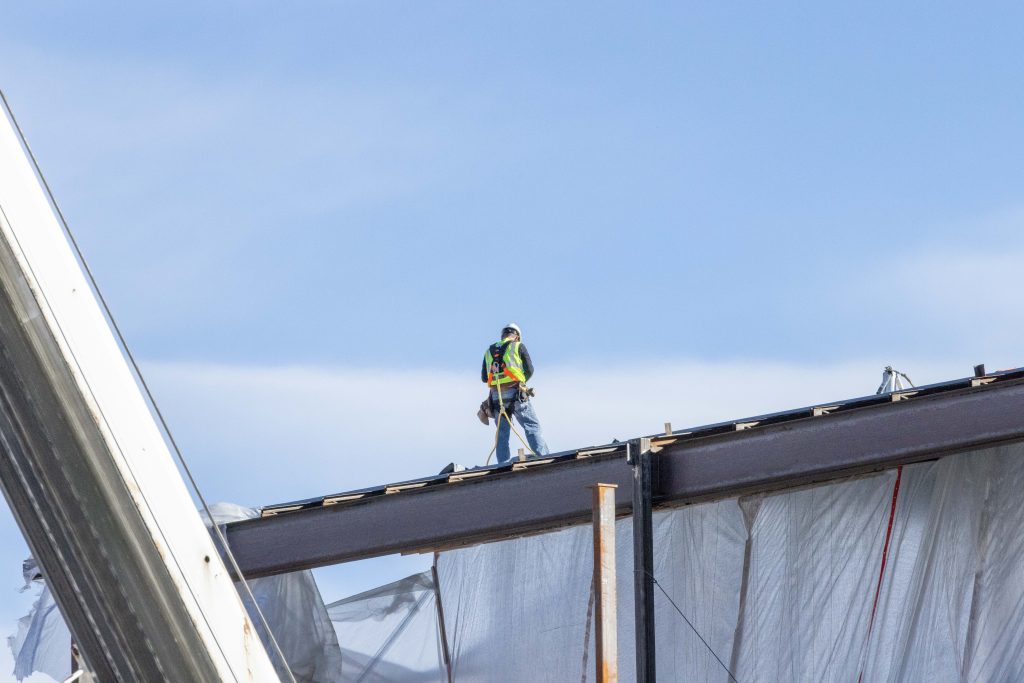Installing a new roof is a significant investment in your property’s protection and value. Whether you’re a homeowner looking to replace your existing roof or a contractor handling roofing projects, following best practices during the installation process is crucial. A well-executed roof installation ensures longevity, energy efficiency, and overall satisfaction. In this article, we will outline some essential best practices for a successful new roof installation.
- Thorough Inspection and Assessment
Before embarking on a new roof installation project, reach out to a reputable roofing contractor to conduct a comprehensive inspection of the existing roof and its supporting structure. Identify any underlying issues such as leaks, damaged decking, or deteriorating flashing. Addressing these problems beforehand ensures a solid foundation for the new roof and prevents potential complications down the line.
- Choose High-Quality Materials
Selecting the right roofing materials is paramount for a durable and long-lasting roof. Consider factors such as climate, architectural style, and budget when choosing materials. Investing in high-quality shingles, underlayment, flashing, and ventilation systems will contribute to the overall performance and longevity of the roof.
- Proper Ventilation
Adequate ventilation is often underestimated but plays a crucial role in maintaining a healthy roof system. Improper ventilation can lead to heat and moisture buildup, which can cause premature deterioration of roofing materials and even structural damage. Ensure proper intake and exhaust ventilation to promote air circulation and prevent issues like ice dams and mold growth.
- Flashing and Sealant
Flashing is essential for preventing water intrusion at vulnerable points such as valleys, chimneys, skylights, and roof penetrations. Improper flashing installation can result in leaks and water damage. Use appropriate flashing materials and ensure they are correctly integrated with the roofing system. Utilize high-quality sealants to create watertight barriers at joints and intersections.
- Accurate Installation
Roofing materials should be installed according to the manufacturer’s guidelines and industry standards. Proper installation techniques contribute to the roof’s performance and aesthetic appeal. Pay attention to details such as nail placement, shingle alignment, and fastening methods. Following best practices ensures the roof’s ability to withstand wind, rain, and other environmental stressors.
- Drip Edge and Eaves Protection
Installing a drip edge along the eaves helps channel water away from the fascia and prevents water damage. Eaves protection, such as ice and water shields, is particularly important in regions prone to ice dams and heavy rainfall. Properly installed eaves protection prevents water from infiltrating beneath the shingles and causing interior leaks.
- Cleanup and Debris Removal
A professional roofing installation includes thorough cleanup and debris removal. Stray nails, discarded materials, and debris can pose safety hazards and damage your property. A clean worksite reflects the quality and professionalism of the installation process.
- Final Inspection
Before considering the project complete, conduct a final inspection to ensure that all components are correctly installed. Address any minor issues or discrepancies and verify that the roof meets local building codes and regulations. A comprehensive final inspection guarantees the roof’s functionality and minimizes future problems.
- Warranty and Maintenance
Provide the property owner with information about the manufacturer’s warranty and recommended maintenance practices. Regular inspections and minor repairs can extend the life of the roof and prevent larger issues from arising.
In conclusion, a new roof installation is a significant undertaking that requires attention to detail, quality materials, and adherence to best practices. By conducting thorough assessments, choosing high-quality materials, ensuring proper installation techniques, and following the steps outlined above, you can achieve a durable, efficient, and aesthetically pleasing roof that enhances the value and protection of any property.
